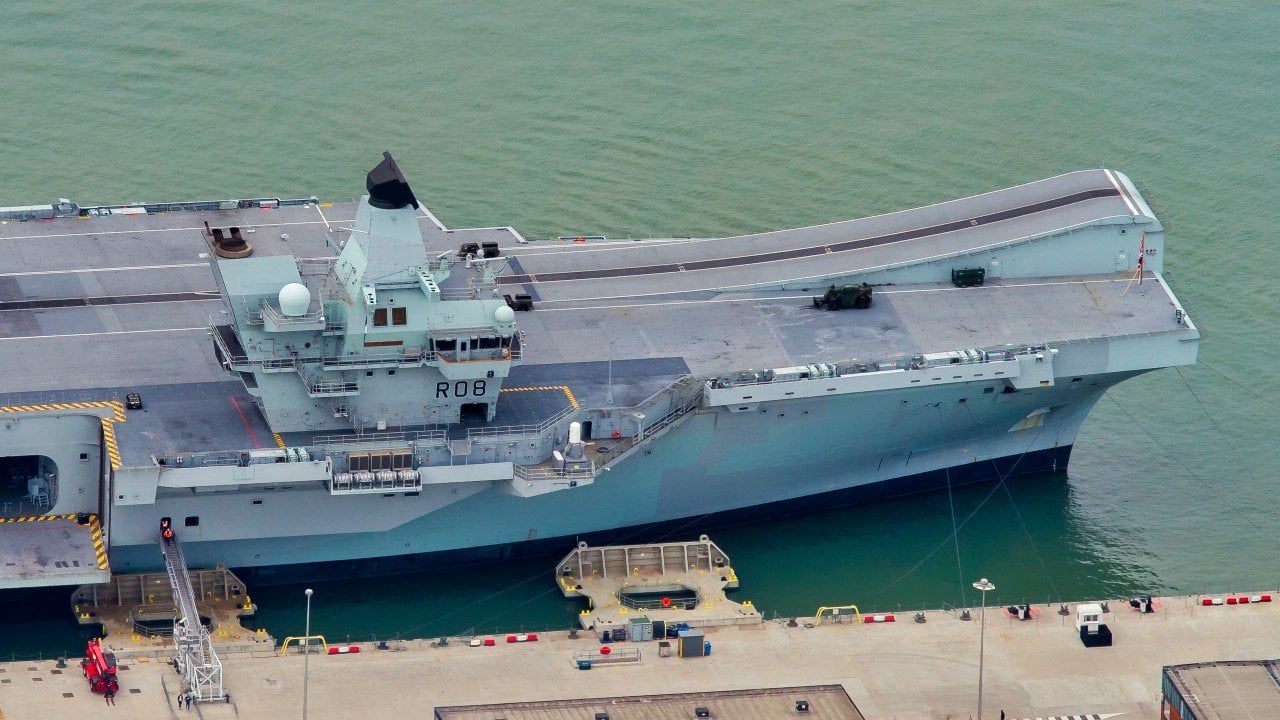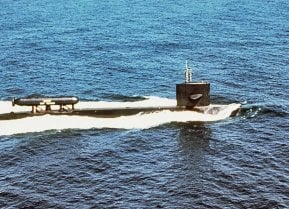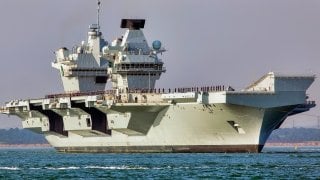Queen Elizabeth Aircraft Carriers: A Nightmare for the Royal Navy?
The Royal Navy, once dominant, has seen a resurgence with the addition of two Queen Elizabeth-class supercarriers: HMS Queen Elizabeth and HMS Prince of Wales. Weighing 65,000 tons each, these Short Take-Off, Barrier Arrested Recovery (STOBAR) carriers can launch F-35B Lightning II stealth jets from their 920-foot flight decks.
What You Need to Know: The Royal Navy, once dominant, has seen a resurgence with the addition of two Queen Elizabeth-class supercarriers: HMS Queen Elizabeth and HMS Prince of Wales. Weighing 65,000 tons each, these Short Take-Off, Barrier Arrested Recovery (STOBAR) carriers can launch F-35B Lightning II stealth jets from their 920-foot flight decks.

-Despite their advanced capabilities, including 72 fast-jet sorties per day and Phalanx CIWS for defense, the carriers have faced maintenance challenges.
-While powerful, they are smaller and less versatile than the U.S. Navy’s Gerald R. Ford-class carriers, which use CATOBAR systems and boast nuclear propulsion for greater speed and range.
UK’s Queen Elizabeth-Class Carriers: Strengths, Challenges, and Future in Naval Warfare
Once upon a time, the Royal Navy ruled the waves. For hundreds of years, the smell of the sea was enough for British troops to feel safe.
The last time that truly happened, however, was during the Falklands War in 1980, when the Royal Navy sailed a task force comprised of over 100 warships and support vessels to war thousands of miles away.
After the Falklands, successive British governments restricted funding to the Royal Navy. The collapse of the Soviet Union and the end of the Cold War only made it easier. It wasn’t until the early 2000s that the Royal Navy began to see more investment, which included two new aircraft carriers.
The Queen Elizabeth-Class Aircraft Carriers
After a hiatus with no aircraft carriers in its active roster, the Royal Navy now boasts two supercarriers, both twin ships of the Queen Elizabeth class.
The Queen Elizabeth class is comprised of two warships, the HMS Queen Elizabeth and the HMS Prince of Wales. Weighing 65,000 tons each, the two supercarriers are the largest warships ever built by the Royal Navy. Despite their size, they can still reach speeds of over twenty-five nautical knots, or twenty-nine miles per hour, and have a range of around 11,500 miles.
The Queen Elizabeth class warships are Short Take-Off, Barrier Arrested Recovery (STOBAR) carriers, meaning that they use a ramp to propel their aircraft to the sky. With a flight deck around 920 feet long and 230 feet wide, the Queen Elizabeth carriers can carry a maximum of seventy-two aircraft, including thirty-six F-35B Lightning II stealth fighter jets. The F-35B is the Short Take-Off, Vertical Landing (STOVL) version of the stealth aircraft and can take off and land like a helicopter but also fly as a fighter jet.

“Each ship is capable of flying seventy-two fast jet sorties per day, which can be increased for limited periods, and two lifts are capable of lifting four F-35 fighter jets from the hangar to the flight deck in just sixty seconds. The jets are then launched into action from a six-metre-high ramp, known as the ‘ski-jump’ at the end of the flight deck,” the Royal Navy explains about the STOBAR capabilities of its two supercarriers.
In terms of self-protection, the Queen Elizabeth carriers pack three Phalanx Close-in Weapon System (CIWS) chain 20mm chain cannons that can fire up to 4,500 rounds a minute, or seventy-five rounds a second, against both air and sea targets.
The two carriers, however, have faced considerable issues, requiring regular repairs.
Although the two Queen Elizabeth class carriers are fleet carriers and the most powerful warships built by the Royal Navy in recent history, they are still smaller and less capable than the U.S. Navy’s latest class of supercarriers, the Gerald R. Ford class. The American carrier can hit maximum speeds of over thirty nautical knots, thirty-five miles per hour, and has an unlimited range due to its nuclear-powered propulsion. Moreover, the Ford class supercarriers are Catapult Assisted Take-Off Barrier Arrested Recovery (CATOBAR) carriers and can launch more types of aircraft faster.
About the Author:
Stavros Atlamazoglou is a seasoned defense journalist specializing in special operations and a Hellenic Army veteran (national service with the 575th Marine Battalion and Army HQ). He holds a BA from Johns Hopkins University and an MA from the Johns Hopkins School of Advanced International Studies (SAIS). His work has been featured in Business Insider, Sandboxx, and SOFREP.
Image Credit: Creative Commons and/or Shutterstock.


